Can we always trust food companies to tell the truth about the contents of their packaging? Absolutely, NOT! There are, however, regulations that mandate specific information must be included. In the United States, these regulations are established and monitored by the U.S. Food & Drug Administration (FDA). The mandatory, or regulated, label items are disclosed in this 3-minute article. We also will point out those markings on food packaging that you should consider suspect, and worth close observation. These are the unregulated labels.
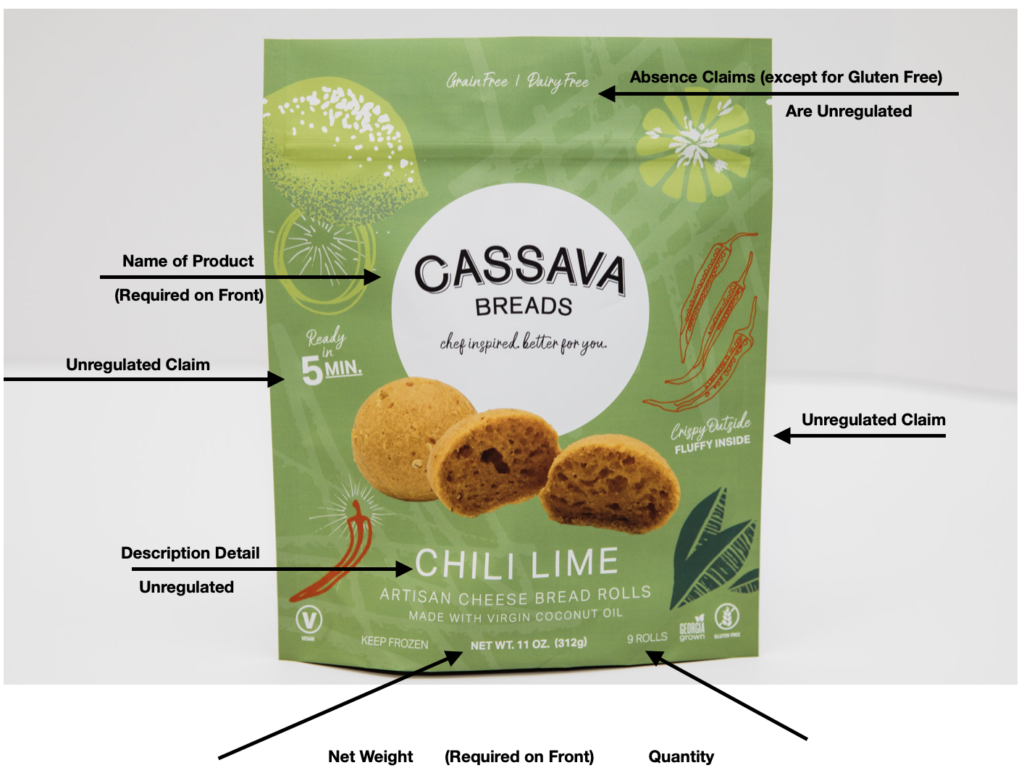
Front of Package (FOP) Labels:
This is the section of a food label consumers see first, which can rapidly influence their decision to buy. Some FOP labels in the U.S. are voluntary, which allows food manufacturers to highlight or hide the nutrition information they choose to help promote or preserve sales, so caution is advised.

The front of the container must also show the Net Weight and/or quantity of the contents, the name of the product, and may include graphics or statements regarding Health and Nutritional Claims.
Side Or Back Panels, Nutrition Facts and Ingredients, Sell By Date and Allergy Information
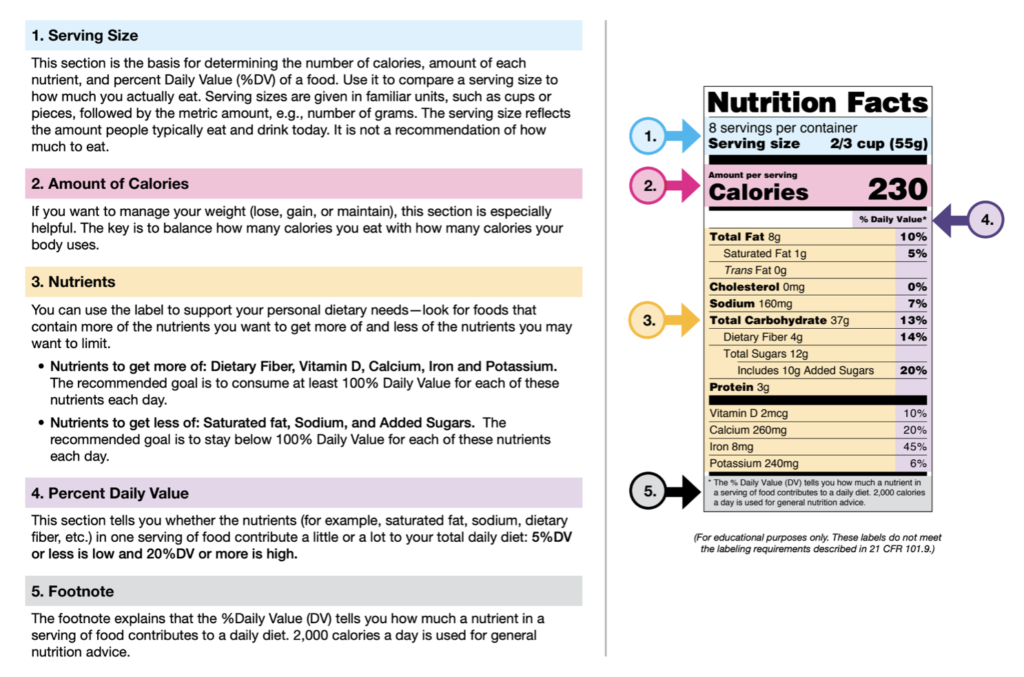
The ingredient statement must be listed on the same panel as the manufacturer information and is also required to be on the same panel as the Nutrition Facts panel, and it should be located immediately below or adjacent to the Nutrition Facts panel.
The ingredients must be listed by weight in descending order of predominance, and by their common or usual name (example: “sugar” instead of “sucrose”). Allergen Information must be included.
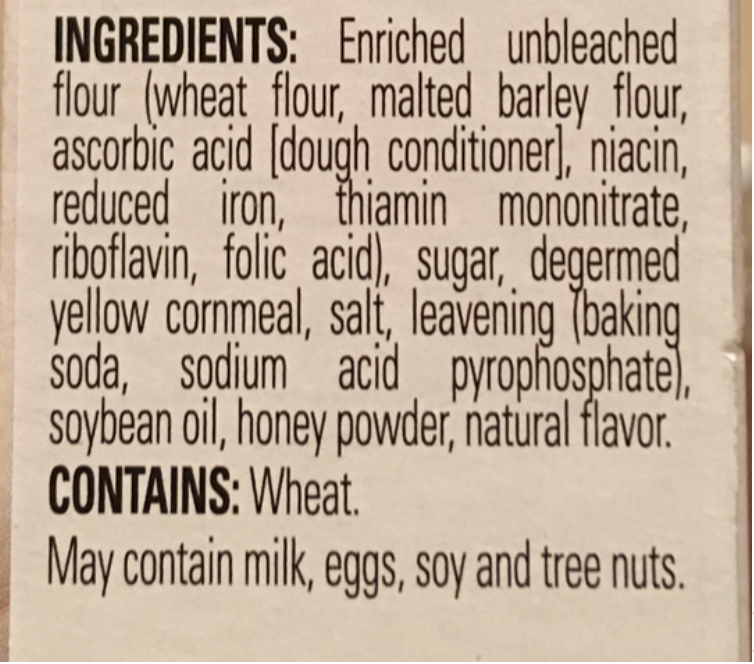
Allergy information
Under the Food Allergen Labeling and Consumer Protection Act of 2004, eight major food allergens—milk, fish, tree nuts, peanuts, shellfish, wheat, eggs, and soybeans—are required to be listed in a “contains” statement near the Ingredients list if present in a food. An example would be “contains wheat, milk, and soy.” For information specifically about food allergies in children, you may find this site of interest.
Sell-by, Best-by, and Use-by dates
These dates found on food products inform both the seller and consumer about the shelf-life and optimal quality of the product. They are determined by the food manufacturer’s judgment for peak quality. Foods can still be eaten safely after these dates, with the exact amount of time dependent on the food product, but the flavor and texture may begin to deteriorate. These expiration dates are not required by federal law though some states may institute their own specific requirements.
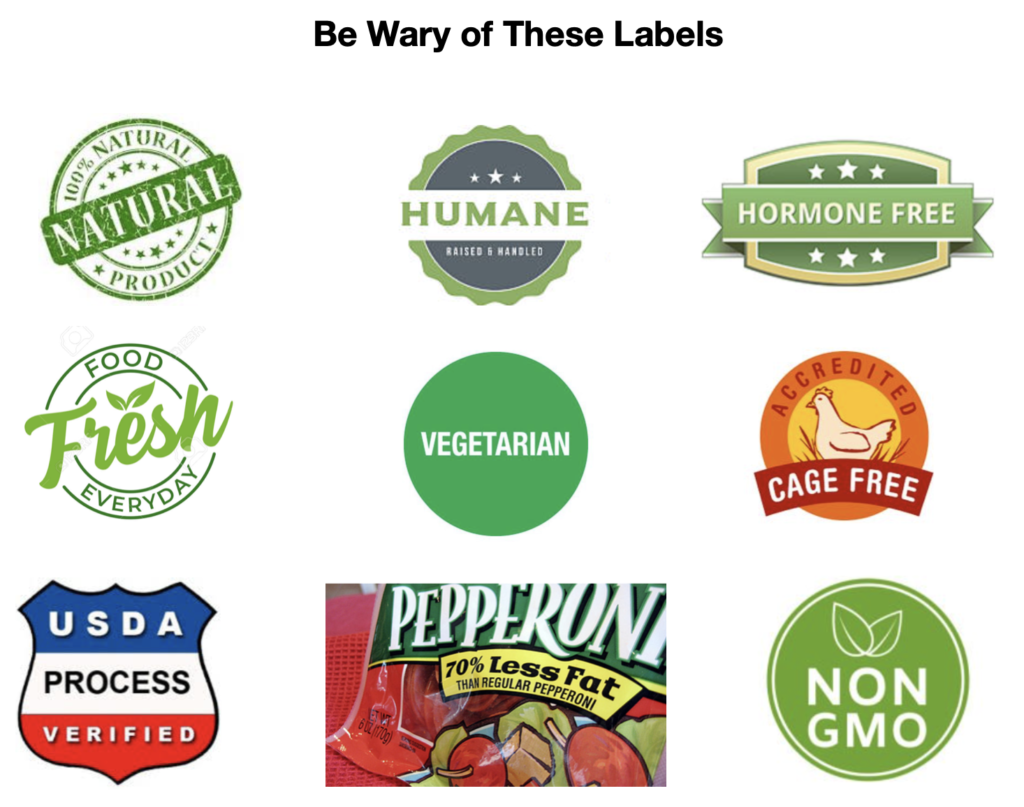
All Natural
Many consumers assume a “natural” label claim means the animals live outdoors. Yet it has nothing to do with how animals are raised and simply means the meat contains no artificial ingredients or added colors, and that it was minimally processed.
Humanely Raised
As there is no legal definition or minimum agreed welfare standard for the term “humane,” you’ll find this label claim on food from animals raised in confinement systems and where antibiotic use and mutilations, such as beak trimming or tail docking, are routine practices.
No Hormones or Steroids
The USDA already bans the use of artificial hormones or steroids in all chicken production, so EVERY chicken processor could use this label claim. It’s another meaningless—and very deceptive—marketing tool.
Fresh
Legally, this label term simply means the internal temperature of the meat must never go below 26° F.
Vegetarian Diet
This label claim indicates the chickens were fed a diet free of animal products. But there is no legal definition for this claim and there are no independent checks on farms relating to this claim, so we can’t know if it’s true. It does not mean the hens were raised outdoors on pasture.
No Animal By-Products
Without any legal definition of what constitutes an animal by-product, a variety of animal-derived ingredients—such as milk or fishmeal—could be fed under this label. As there is no independent on-farm verification, no one will have audited the farm to check if this claim is even true.
Cage-Free
You might think this company is making a special concession to animal welfare by raising chickens without a cage. But all meat chickens are raised “cage-free”! So this widely used marketing claim is actually highly misleading.
USDA Process Verified
Despite its positive appeal, the USDA Process Verified label simply means a company is providing “consistent quality products or services.” It offers no assurances about animal welfare, environmental or social responsibility. Research also shows the USDA approves most Process Verified label claims without ANY supporting evidence from food manufacturers!
Non-GMO
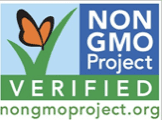
Unfortunately, a non-GMO claim is not reliable because there are no clear rules for using the claim nor a consistent way of verifying it. However, The Non-GMO Project is a nonprofit organization that has developed a verification system backed by frequent testing of ingredients that could be genetically modified for consumers who wish to avoid them. For a product to display the “Non-GMO Project Verified” seal, the food must contain no or minimal (less than 0.9 percent) genetically modified or engineered organisms. Manufacturers must work with independent certification companies who verify that the product meets the Non-GMO Project’s standards.
Consumers must be continually vigilant for misleading food packaging labels, not only for bogus claims about the benefits of the contents, but for the amount of the contents as well. While content quantity is itself a regulated label, package sizing is not. A manufacturer may keep the size of a package the same while reducing the net weight and quantity of what is inside. In many cases the product can continue to be offered at the same price while containing less food. This has been a regular practice over the last couple of years because of persistent inflation and has earned the term ‘shrinkflation‘.
For an in-depth look at food labels beyond the scope of this 3-minute exposure, check out this site.

Welcome to 3-Minutes A Day University, where every day you can learn a little about a lot of things in three minutes or less. We help you expand your knowledge and understanding of the real world, and 3-MAD University is tuition-free. Our wide-ranging syllabus includes a fascinating insight into topics including Health and Medicine, Science, Sports, Geography, History, Culinary Arts, Finance and the Economy, Music and Entertainment, and dozens more. You will impress yourself, your friends, and your family with how easy it is to learn facts and perspectives about the world around you. One topic you will never find covered is politics. We hope you enjoyed the previous three minutes.
Was this email forwarded to you? Subscribe Here.
© Copyright 2024. 3-Minutes A Day University All Rights Reserved. Unsubscribe


Rick
Good one Kris!